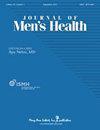中老年2型糖尿病男性肌肉量减少与血清尿酸和尿白蛋白的相关性
IF 0.6
4区 医学
Q4 Medicine
引用次数: 0
摘要
本横断面研究将2型糖尿病中老年男性的肌肉量减少与血清尿酸和尿白蛋白联系起来。研究对象为288例我院住院的中老年男性2型糖尿病患者。根据是否诊断为肌肉减少症,将患者分为肌肉减少症组(n = 95)和非肌肉减少症组(n = 193)。收集患者的相关临床资料。采用单因素分析和多因素回归分析探讨肌肉减少症的影响因素。建立中老年男性2型糖尿病患者肌肉减少概率的二元logistic回归分析模型。Hosmer和Lemeshow检验评价了概率模型的拟合优度。采用SPSS软件绘制受试者工作特征(ROC)曲线,并对预测模型的预测值进行评价。单因素分析显示,与非肌少症患者相比,肌少症患者年龄较大,BMI(身体质量指数)较低,尿酸(UA)较低,CRP (c反应蛋白)较高。差异有统计学意义(p <0.05)。二元logistic回归分析显示,年龄和UACR(尿白蛋白与肌酐比值)是中老年男性2型糖尿病患者肌肉减少症的危险因素,而BMI和UA是保护因素。对于中老年男性T2DM患者,年龄和UACR是肌少症的危险因素,BMI和UA是肌少症的保护因素。对T2DM患者上述指标的变化应进行临床监测,并对高危人群进行早期积极干预,减少肌肉减少症的发生。本文章由计算机程序翻译,如有差异,请以英文原文为准。
Correlation between muscle mass reduction and serum uric acid and urinary albumin in middle-aged and elderly type 2 diabetes men
This cross-sectional study correlated the muscle mass reduction with serum uric acid and urinary albumin in middle-aged and elderly men having type 2 diabetes. The study subjects were 288 middle-aged and elderly male patients with type 2 diabetes (T2DM) admitted to our hospital. They were divided into sarcopenia (n = 95) and non-sarcopenia (n = 193) groups based on whether diagnosed with sarcopenia or not. The relevant clinical information of patients was collected. Single factor analysis and multiple factor regression analysis were employed to explore the influencing factors of sarcopenia. A binary logistic regression analysis model was established for the sarcopenia probability in middle-aged and elderly men with T2DM. Hosmer and Lemeshow test evaluated the Goodness of fit of probability model. ROC (Receiver Operating Characteristic) curve was drawn by SPSS and the predictive value of prediction model was evaluated. The univariate analysis depicted that the patients in sarcopenia group compared to those in non-sarcopenia were older with lower BMI (Body Mass Index), lower UA (Uric Acid) and higher CRP (C-reactive Protein). The differences were statistically significant (p < 0.05). The binary logistic regression analysis exhibited that the age and UACR (Urine Albumin-to-Creatinine Ratio) were the risk factors, while BMI and UA were the protective factors for sarcopenia in middle-aged and elderly men with T2DM. For middle-aged and elderly male patients with T2DM, age and UACR were the risk factors, and BMI and UA were the protective factors for sarcopenia. The changes in above-stated indicators of patients with T2DM should be clinically monitored, and early and active intervention be given to high-risk groups for minimizing the sarcopenia occurrence.
求助全文
通过发布文献求助,成功后即可免费获取论文全文。
去求助
来源期刊

Journal of Men's Health
Medicine-Urology
CiteScore
0.70
自引率
28.60%
发文量
153
审稿时长
10 weeks
期刊介绍:
JOMH is an international, peer-reviewed, open access journal. JOMH publishes cutting-edge advances in a wide range of diseases and conditions, including diagnostic procedures, therapeutic management strategies, and innovative clinical research in gender-based biology. It also addresses sexual disparities in health, life expectancy, lifestyle and behaviors and so on. Scientists are encouraged to publish their experimental, theoretical, and descriptive studies and observations in as much detail as possible.
 求助内容:
求助内容: 应助结果提醒方式:
应助结果提醒方式:


